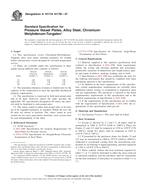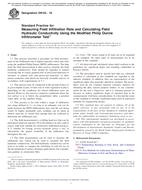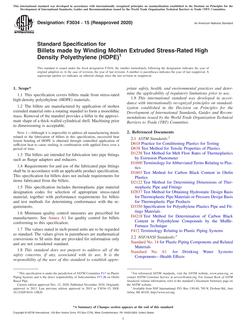1.1 This guide covers the general procedures necessary to conduct gamma, natural gamma, total count gamma, or gamma ray (hereafter referred to as gamma) logging of boreholes, wells, access tubes, caissons, or shafts (hereafter referred to as boreholes) as commonly applied to geologic, engineering, ground-water, and environmental (hereafter referred to as geotechnical) investigations. Spectral gamma and logging where gamma measurements are made in conjunction with a nuclear source are excluded (for example, neutron activation and gamma-gamma density logs). Gamma logging for minerals or petroleum applications are excluded.
1.2 This guide defines a gamma log as a record of gamma activity of the formation adjacent to a borehole with depth (See Fig. 1).
1.2.1 Gamma logs are commonly used to delineate lithology, correlate measurements made on different logging runs, and define stratigraphic correlation between boreholes (See Fig. 2).
1.3 This guide is restricted to gamma logging with nuclear counters consisting of scintillation detectors (crystals coupled with photomultiplier tubes), which are the most common gamma measurement devices used in geotechnical applications.
1.4 This guide provides an overview of gamma logging including general procedures, specific documentation, calibration and standardization, and log quality and interpretation.
1.5 To obtain additional information on gamma logs, see Section 13.
1.6 This guide is to be used in conjunction with Guide D5753.
1.7 Gamma logs should be collected by an operator that is trained in geophysical logging procedures. Gamma logs should be interpreted by a professional experienced in log analysis.
1.8 The geotechnical industry uses English or SI units. The gamma log is typically recorded in units of counts per second (cps) or American Petroleum Institute (API) units.
1.9 This guide does not purport to address all of the safety and liability problems (for example, lost or lodged probes and equipment decontamination) associated with its use.
1.10 This standard does not purport to address all of the safety concerns, if any, associated with its use. It is the responsibility of the user of this standard to establish appropriate safety and health practices and determine the applicability of regulatory limitations prior to use.
1.11 This guide offers an organized collection of information or a series of options and does not recommend a specific course of action. This document cannot replace education or experience and should be used in conjunction with professional judgment. Not all aspects of this guide may be applicable in all circumstances. This ASTM standard is not intended to represent or replace the standard of care by which the adequacy of a given professional service must be judged, nor should this document be applied without consideration of a project’s many unique aspects. The word “Standard“ in the title of this document means only that the document has been approved through the ASTM consensus process.
Product Details
- Published:
- 10/01/2010
- Number of Pages:
- 11
- File Size:
- 1 file , 200 KB
- Redline File Size:
- 2 files , 410 KB


